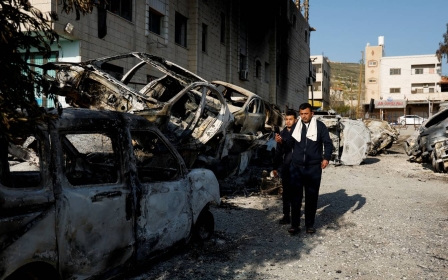The Nakba: All you need to know explained in five maps and charts

Every year on 15 May Palestinians mark the Nakba, "catastrophe" in English, when around 750,000 Palestinians were forcibly expelled from their homes by Zionist militias to make way for the creation of Israel in 1948.
It is an event that has shaped politics in Israel and Palestine ever since, and one which Palestinians say continues today in different forms of war, occupation, siege, home demolitions, land confiscations and more.
Here, Middle East Eye breaks down the Nakba in five graphics.
Stay informed with MEE's newsletters
Sign up to get the latest alerts, insights and analysis, starting with Turkey Unpacked
The events of the Nakba can be traced back to 1917, when Britain, in the "Balfour Declaration", promised Zionists leaders that it would help establish "in Palestine a national home for the Jewish people".
After capturing Jerusalem from the Ottoman Empire at the end of World War One (1914-18), Britain ruled over Palestine between 1923-1948 under a "mandate" from the League of Nations.
Under 25 years of British rule, Palestinians were repeatedly suppressed, while European Jewish immigration flourished and Zionist groups were trained and armed.
With Britain deciding to end its mandate over Palestine in 1947, and the United Nations failing to enforce an alternative administration, Zionists began attacking Palestinians as part of a systemic campaign of forced expulsion.
By the end of the war, Zionist forces had killed 13,000 Palestinians, destroyed and depopulated around 530 villages and towns, committed at least 30 massacres and expelled 750,000 people.
Around 150,000 Palestinians remained within the boundaries of the newly formed state of Israel, many of them internally displaced.
Those expelled in 1948 and their descendants number 5.8 million refugees today, living mostly in neighbouring Arab countries.
Israel has never allowed Palestinian refugees to return to their homeland, making their plight the longest unresolved refugee crisis in modern history.
Middle East Eye delivers independent and unrivalled coverage and analysis of the Middle East, North Africa and beyond. To learn more about republishing this content and the associated fees, please fill out this form. More about MEE can be found here.









